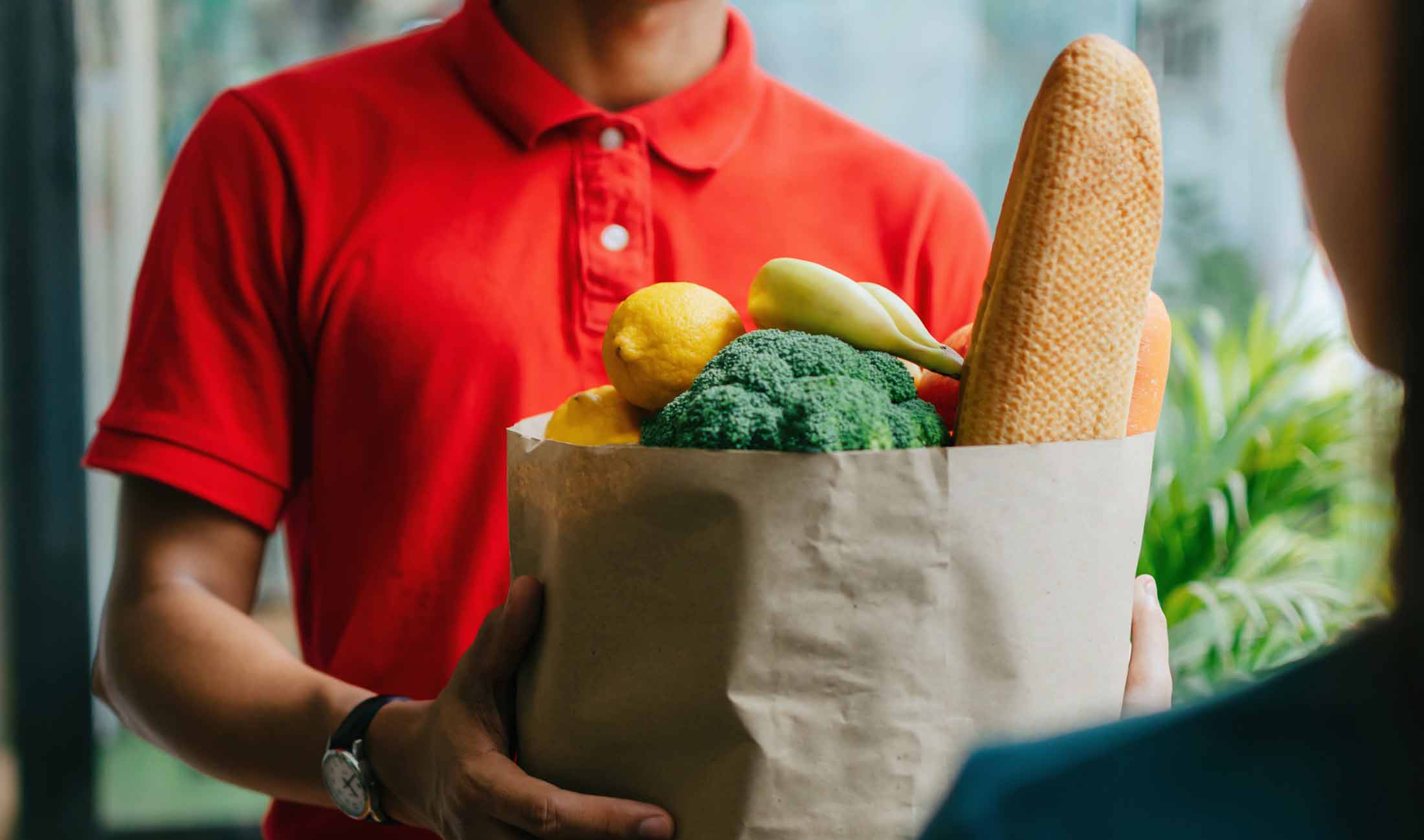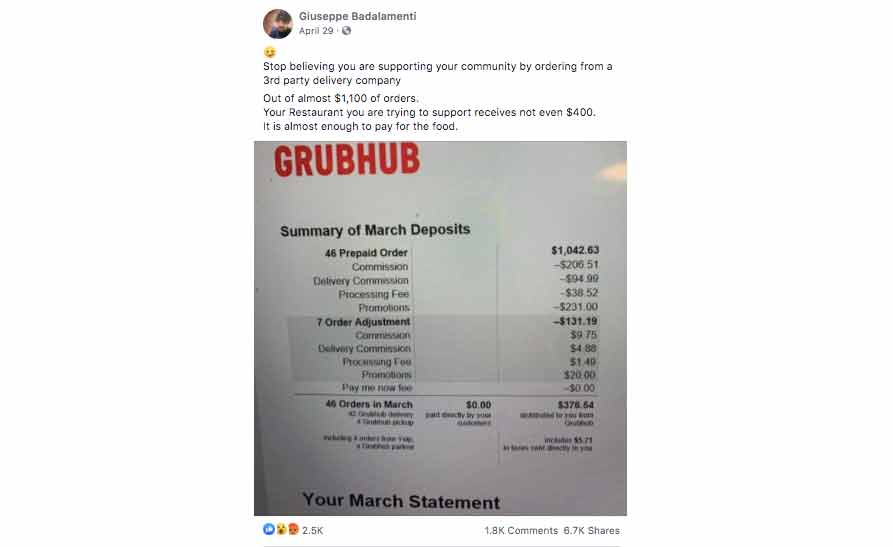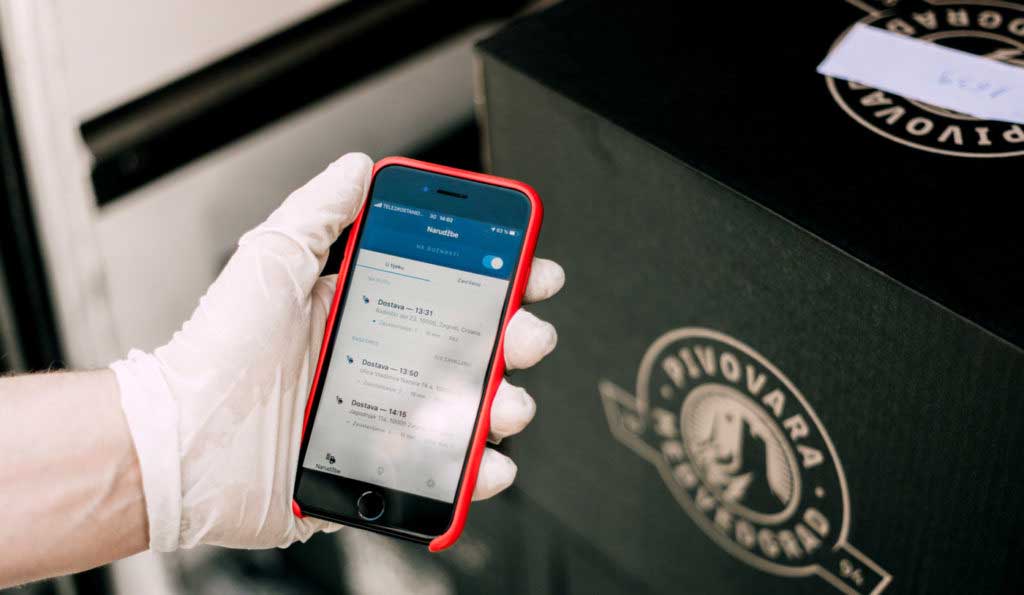In-House Delivery: Why It’s the Best Choice for Your Business

The demand for home delivery has increased substantially over the past two years. Online grocery shopping almost doubled from about 40% of consumers before 2020 to almost 80% after. In 2020, ecommerce sales rose 32% in the United States (14% higher than predicted) and 42% of restaurants added home delivery for the first time.
We’ve seen the same trends with businesses that use OptimoRoute for their in-house delivery.
With the sudden increase in delivery demands brought on by the pandemic, many businesses turned to offering delivery through third-party delivery companies because it seems cheaper or easier than hiring your own drivers and managing it in-house. But these companies are taking advantage of the opportunity. From shipping couriers to food delivery, they’ve been raising their fees or introducing ambiguous surge pricing that’s eating up your profits. Then there are additional costs to your business when deliveries are late or the order is wrong.
Using your own in-house delivery service is the best solution to help you meet your customers’ delivery needs, provide them with a better experience, and make more money by keeping your sales revenue instead of paying it to third-party delivery services.
Topics covered in this article include
- What Is In-House Delivery?
- Why You Should Offer In-House Delivery
- How OptimoRoute Can Help You Offer In-House Delivery
- Start In-House Delivery With OptimoRoute Today
What Is In-House Delivery?
In-house delivery, or self-delivery, is when a business uses their own resources and employees to deliver a product. Self-delivery means that you aren’t working with a shipping carrier, like FedEx or UPS, or using a third-party delivery platform, like DoorDash, GrubHub or Instacart, to deliver your goods.
Why You Should Offer In-House Delivery
You should offer in-house delivery because outsourcing third-party delivery is costing your business in more ways than one.
To increase profits
Third-party delivery apps have increased their fees, making profit margins smaller for businesses. With in-house delivery, you can make more money and keep it.
Starting last summer, all three U.S. parcel delivery companies—UPS, FedEx, and USPS—announced pricing changes, such as peak surcharges, oversized package surcharges, and additional handling surcharges. And prices are only going to keep rising. FedEx has announced rate increases of 4.9% to 5.9% on several of its services beginning in 2021, and USPS will raise the cost for First-Class Mail 1.8%, and other categories will increase 1.5% in 2021. These ever-growing fees will add up for businesses that aren’t Amazon, who use these carriers for last mile delivery.
For restauranteurs that use third-party vendors, the fees are even greater. Some, like Uber Eats and Grubhub, take up to 40% of every delivery order in commission fees, and then add on delivery fees and other ambiguous charges.
To show the reality of the situation for independent restaurants, rather than restaurant chains, Giuseppe Badalamenti, a restaurant consultant and the owner of Chicago Pizza Boss, posted to Facebook a Grubhub receipt from a restaurant he works with. It shows the restaurant brought in $1,043.63 from 46 orders through Grubhub, but after commissions, fees, and promotions were deducted, the restaurant was left with only $377.

According to ChowNow, when restaurants use third-party services, they often “lose money on these orders.”
To improve customer relationships
Problems are common for third-party delivery companies, and when orders show up late or are wrong, customers don’t blame the delivery companies; they blame you.
Recent research “found that consumers experience problems with multi-restaurant delivery websites/apps an average of 24.4% of the time, including missing or incorrect food or side items, food either too cold or too warm, and unacceptably late delivery.”
And according to Red Robin’s VP of business innovation in an interview with FSR magazine, “If something is wrong, they [the customers] don’t blame DoorDash, they blame the restaurant, which may or may not be our fault.”
Companies that use shipping carriers experience issues, too. On average, 6% to 12% of packages experience delays, and that increases to more than 30% during peak delivery periods like Christmas. You can lose customers even if the delay is the carriers’ fault because “17% of buyers will stop shopping with an ecommerce retailer after receiving a late delivery once; 55% will not shop with the retailer again after two to three late deliveries.”
To prevent unexpected delivery delay expenses
While fees impact your bottom line, delivery delays can increase costs, too.
Service cutbacks to USPS have caused delays that have impacted small businesses. According to an article in the Los Angeles Times, businesses with 10 or fewer employees use USPS more than other businesses. Their delays have forced business owners to reimburse customers when products don’t arrive on time and pay to send a replacement with a more expensive carrier.
So far, this has cost CR&A Custom Inc., a Los Angeles-based digital sign printer, about $4,900.
To avoid surprise fees from third-party services
Sometimes you may even be charged a fee by a third-party vendor for a service you didn’t know you were using. GrubHub, for example, has created phone numbers for businesses so that when customers call, Grubhub charges the business a fee even though the customer doesn’t order through the app. Their generated numbers appear within their apps, but they often show up as the number for a restaurant in Google and Yelp as well.
This is what’s happening to Rafaela Negrao, co-owner of Brooklyn’s Gourmet Kitchen. She told Buzzfeed, “If a customer calls to place a coffee order, we’re paying a $6.42 fee — for a coffee.” Because of the flat fee, she says they’re actually paying customers to drink their coffee.
“If you look at it that way, you see how much it hurts.”
How OptimoRoute Can Help You Offer In-House Delivery
With delivery demands expected to remain high now is the time to spare yourself the costs and headaches of third-party vendors and opt for in-house delivery instead.
The reason many businesses don’t offer self-delivery is that they fear it will be more expensive and more complicated to manage than using third party providers. But that’s not necessarily true. If your business deliveries are focused on a specific geographic area, in-house delivery might be the most affordable option because you avoid high and surprising fees and can improve customer retention. And by using OptimoRoute’s route optimization software, we handle the logistics and help you keep your delivery costs low.
OptimoRoute helps you:
- Find the most efficient routes instantly. Reduce your miles traveled and your gas expenses—and save time—by letting our software find the best routes for your delivery drivers.
- Account for multiple variables. Our software accounts for real-life situations and restrictions, like respecting precise delivery-time windows, order load, and stop duration.
- Keep customers updated. Prevent the potential for redelivery expenses by sending customers real-time notification by text or email so they know when you’ll arrive.
- Make last-minute adjustments. If a new order comes in or a driver calls in sick, it won’t affect delivery because our software provides real-time route modification to make last-minute adjustments easy.
- Balance workloads among drivers. Distribute deliveries among your delivery team by hours or number of orders to ensure efficiency across your fleet.
- See if drivers are sticking to the plan. With breadcrumbs, find out if drivers are sticking to the most efficient routes to keep your costs down.
Medvedgrad ramped up in-house delivery with OptimoRoute
Medvedgrad Brewery operations manager Petar Nauković knew that to survive the COVID-19 crisis, the business had to reinvent itself. They’d never thought about offering home delivery before, but when bars and restaurants were shut down, the brewery decided to introduce same-day home-delivery service.
They were able to repurpose staff who could no longer work in other parts of the company by having them handle deliveries; they had delivery vehicles, but they needed help to plan their routes. That’s when they turned to OptimoRoute.

“As soon as I learned about OptimoRoute, I started the free 30-day trial. Orders were coming in and we had to get out on the road immediately.”
With our service, they were able to plan daily routes for multiple drivers in minutes and efficiently deliver more than 200 orders a day.
Evolution RX provides free home delivery with OptimoRoute
Self-delivery isn’t just for food and beverage companies. Many businesses can benefit from in-house delivery, like Evolution Rx, an independent pharmacy in Houston, Texas.
When competing against large pharmacy chains, Evolution Rx found their competitive edge by providing free home delivery for prescription medications. But to provide this service, they needed to keep delivery costs as low as possible by finding the most efficient routes.
Before trying OptimoRoute, they tested four other route-planning products, according to pharmacy manager Frederick Lyons. “OptimoRoute was hands down the favorite.”
Start In-House Delivery With Optimoroute Today
With the need for delivery continuing to grow along with third-party service costs, now is the time to start using in-house delivery. If you’re a restaurant owner, we’ve provided the steps you need to take to launch your own food delivery business. And whether your focus is food or ecommerce, if you want to provide a better customer experience and make more money with self-delivery, try OptimoRoute for free.
Try OptimoRoute™ for Free
No installation or credit card required


